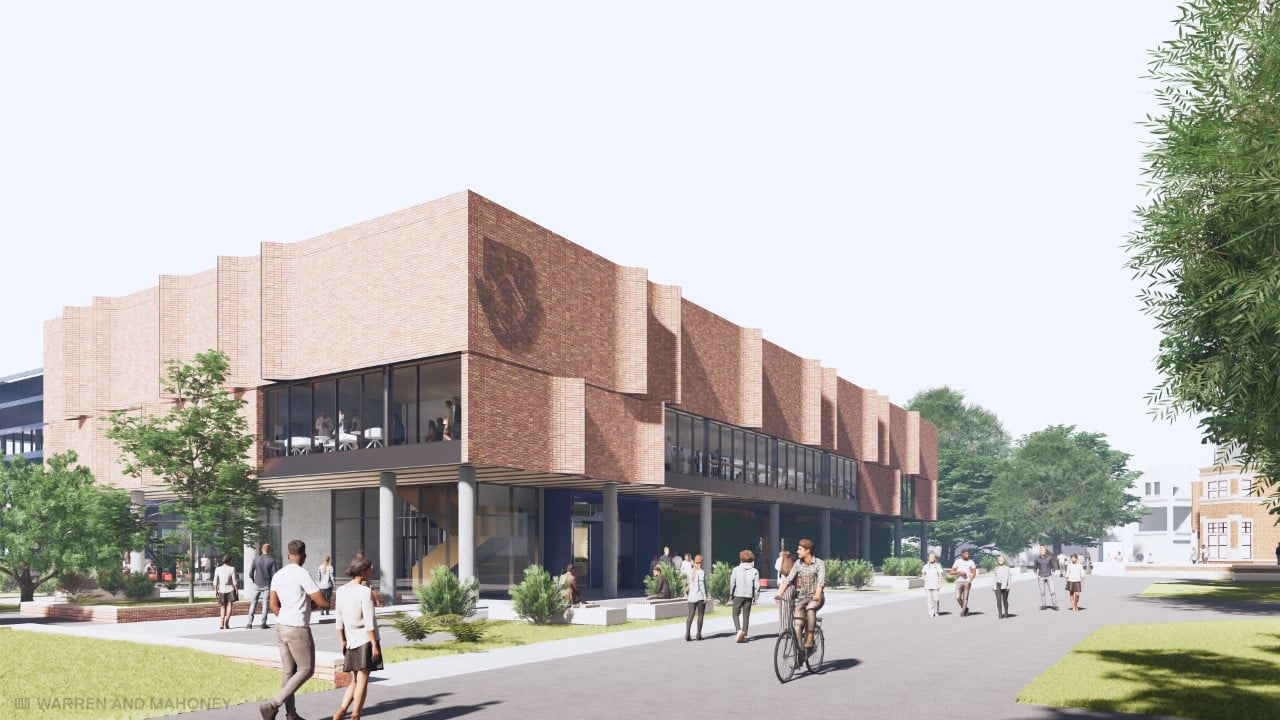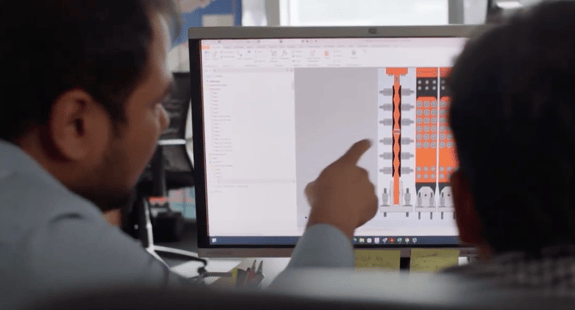
LINCOLN UNIVERSITY
Leighs Construction
Building Intelligence Group
Challenge
Impact
Outcome

An Education Institution in a Seismically Active Location
Located just outside Christchurch on the South Island of New Zealand, Lincoln University is New Zealand’s only specialist land-based university, delivering world-leading education and research programmes from its vibrant and park-like campus. With the historic Ivey Hall Building at its core, the University wanted a new purpose-built teaching and research facility to house its Faculty of Agriculture and Life Sciences.
Christchurch experienced a destructive series of earthquakes 2010-2011 which resulted in 70% of inner-city buildings being knocked down. Most buildings remained standing thanks to life safety building code standards, but residual drift in those structures was such that it was more economical to rebuild rather than repair.
The University was careful to consider earthquake safety for its Importance Level 3 (IL3) science facility. In addition, their sustainable infrastructure goals led them to look at resource-efficient additions such as a roof-mounted solar array, ground-sourced heating and cooling system, and rainwater reticulation.
Conventional Structural Design
Beca and the innovative Christchurch structural engineers (Chris Wallington – Associate in Structural Engineering and Samir Govind – Technical Director in Structural Engineering) were chosen by Lincoln University to lead the structural design of the project.
Working collaboratively together with architects Warren and Mahoney they came up with an overall design that comfortably met the client’s brief.
The Science North Building is a 9,450m2, three-level building comprised of concrete walls and steel frames set upon a 450 mm engineered concrete raft with localized thickenings. The façade of glass and brick allows for modern well-lit internal spaces whilst providing a visual connection to the campus’ poster-worthy Ivey Hall built in 1882. Due for completion in May 2023, the building will be a fit-for-future learning and research facility located within a bio-diverse park-like environment.
The lateral system for the Research Building initially included concrete shear walls and steel concentrically braced frames (CBFs) in the transverse and longitudinal directions, respectively. The primary driver for introducing shear walls and CBFs was to provide a stiff lateral structure that limited inter-storey drift.
CBFs were positioned on three bracing lines, the northern and southern elevations, and a central gridline in the middle of the building. Six shear walls were positioned on four bracing lines. Four of these walls were integrated into the laboratories. The advantage of bringing the shear walls in one bay from the ends of the building allows for additional gravity loading to counteract uplift forces at the ends of the walls.
Although the research laboratories were heavily serviced, the chosen shear wall arrangement kept the central corridor free of vertical structure. The two remaining walls were placed in the offices with even distribution to those in the laboratory.
Seismic Dampers on Steel Braces & Concrete Walls
In their quest to deliver new and innovative solutions to clients, Beca introduced Tectonus as an alternative approach during the preliminary design phase.
Beca conveyed Tectonus’ advantages of low damage design, zero maintenance, and speed to functional recovery. Eventually, the client and the wider project team agreed to consider the alternative, provided there would be minimal cost increase to the delivered structure. The Resilient Slip Friction Joint (RSFJ) was developed in 2015 and provides a unique combination of damping and self centering all-in-one.
The alternative concept design saw RSFJs implemented at the ends of shear walls and at one end of braces in the CBF direction. The intention was to concentrate energy dissipation at the RSFJs and design the remaining building elements and connections for the corresponding building movements to avoid structural damage up to an Ultimate Limit State (ULS) event. The RSFJ devices could also be designed to limit device movements so that inter-story drifts could remain limited. An added advantage of shear walls with RSFJs is that large in-plane stiffness of the shear walls means they act as a stiff backbone and promote movement in the RSFJ devices.
Engineers conducted pushover analysis on conventional and alternative designs. For the conventional design, ductility came out at 2.0 and lateral drift limit assumed New Zealand Building Code values of up to 2.5%. The alternative design enabled the engineers to control and limit the ULS and SLS drifts to a lower level which enabled considerable savings with the omission of deflection head details for non-structural partition walls.
Cost Comparison
The Quantity Surveyor costed the conventional and alternative designs during the preliminary design phase.
The replacement of conventional connectors with Tectonus RSFJs naturally led to an increase. This was offset by removal of two shear walls in the alternative design resulted in a reduction of approximately 60 cubic metres of concrete as well as savings on conventional connectors, transportation to site and installation.
A highly conservative sum was included for RSFJ installation since the general contractor had not installed them before. Engineering PS2 peer review of the alternative design was also considered.
The net result was that the conventional design and the Tectonus-based alternative design came out approximately the same. The increase in usable floorspace enabled by the removal of two shear walls was not factored into the cost comparison, though it was highly valued by the architect and client.
Enhanced Seismic Reslience
The Tectonus RSFJs effectively paid for themselves through realising near term cost savings. In the event of a future earthquake, the Tectonus approach would deliver additional benefits over conventional:
- Thanks to its self-centering behaviour the RSFJ enables a structure to withstand an earthquake with no residual drift – reducing or eliminating the cost of structural repairs
- There are no sacrificial elements in the RSFJs, so nothing to repair or replace in the event of an earthquake
- Reduced downtime after an earthquake, allowing occupants to get back to using the building much faster than the conventional approach
- Tectonus RSFJs provide ongoing protection against aftershocks without need for repair or replacement whereas conventional connectors would continue to yield.
The client’s requirements had been met and the green light was given to the Tectonus-based alternative design concept. At the time of writing, the RSFJs have been installed and final completion is expected in 2023.

